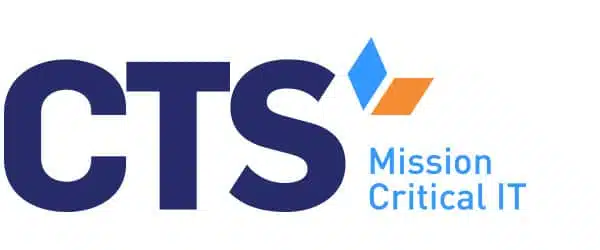Cloud-based systems present many benefits to modern organizations, including streamlining operations, cutting costs, and remote access. However, the cloud also presents another attack vector for cybercriminals to take advantage of.
Protecting data in the cloud needs to be a top-tier priority when moving your operations to cloud-based solutions. That shift opens the door to flexibility and efficiency, but organizations must be prepared for the new risks.
There are a number of steps you can take to increase your cloud security measures and better protect your data.
The Urgency of Strong Data Security in Cloud Computing
Cloud computing and data security go hand in hand. Without the right security measures in place, organizations risk losing more than just files. A breach can mean downtime, legal penalties, reputational damage, and lost trust, especially in sectors like education and non-profit where resources are tight and expectations around privacy are high.
Data security in cloud computing isn’t just about locking things down; it’s about maintaining control in a constantly changing environment. You’re no longer just protecting a few on-site machines—you’re safeguarding data that moves across data centers, devices, and cloud resources in real time.
Learn more: A Complete Guide to Cybersecurity
Best Practices for Cloud Data Security
1. Understand Shared Responsibility
One of the most overlooked aspects of cloud data security is understanding the shared responsibility model. It outlines what your cloud provider secures and what you must take charge of. While providers manage the underlying cloud infrastructure—servers, data centers, and core services—you’re still responsible for the security of your data, configurations, and user activities.
For example, while a provider might offer data encryption capabilities, it’s your team’s job to ensure they’re turned on and correctly implemented. Misunderstanding this boundary can lead to critical gaps in protection. Knowing your role helps ensure data in the cloud stays secure and compliant, and that no one assumes someone else is handling it.
2. Cloud Security Assessments
Before implementing tools or policies, you need to know what you’re working with. A thorough cloud security assessment gives you a clear view of your cloud infrastructure, including what data you’re storing, where it’s being stored, and who has access.
For many organizations, especially those juggling multiple platforms and systems, this first step often reveals blind spots such as unmonitored cloud resources, inconsistent access controls, or even outdated Data Loss Prevention (DLP) settings that no longer reflect current risk.
The goal is to create a security baseline. From there, you can align your cloud data protection strategy with your compliance requirements and operational needs.
3. Secure the Perimeter
Despite the shift to cloud-based systems, traditional perimeter security still plays a critical role, especially in hybrid cloud environments. Think of your perimeter as the gatekeeper: it controls who and what can access your network from the outside.
Using firewalls, virtual private networks (VPNs), and Intrusion Detection Systems (IDS) helps filter traffic and block threats before they reach your cloud infrastructure. You can also implement geo-blocking or IP restrictions to limit access from high-risk regions.
These tools, combined with real-time monitoring, allow you to spot unusual activity early and respond before damage is done.
4. Implement Multi-Factor Authentication
Passwords alone don’t cut it anymore. Implementing Multi-Factor Authentication (MFA) is one of the most effective ways to secure cloud access, especially in environments where users log in from multiple devices and locations.
MFA works by requiring users to provide two or more forms of verification before accessing cloud-based systems. It’s a fast, scalable way to strengthen identity verification without adding complexity for your team.
MFA also significantly reduces the risk of unauthorized access to data in the cloud. It’s especially valuable for protecting sensitive areas which often reside in secure cloud data storage environments.
5. Enforce Access Controls and Least Privilege
Not everyone needs access to everything. A key part of data security in cloud computing is limiting access based on roles, which is known as the principle of least privilege. Simply put, users should only have access to the cloud resources and data necessary for their job, nothing more.
This approach minimizes risk if an account is compromised and also simplifies internal audits. In environments like schools or non-profits, where roles often shift and teams wear multiple hats, it’s easy for access permissions to balloon over time. Without regular reviews, users may retain privileges long after they’re needed.
Using Identity and Access Management (IAM) tools to automate access control and monitor privilege escalation helps ensure data is only accessible to those who need it. Combined with real-time activity tracking, these controls form a strong foundation for any secure cloud environment.
6. Encrypt Data
Encryption is non-negotiable when it comes to cloud data security. Whether you’re transferring data between systems or storing it long-term, encryption ensures that even if data is intercepted or accessed without authorization, it’s unreadable and useless to bad actors.
For organizations managing sensitive records, encrypting both data in transit and data at rest is essential. Most secure cloud providers offer built-in encryption capabilities, but it’s important to verify configurations and manage your own encryption keys whenever possible.
This extra layer of protection strengthens your DLP strategy, reinforces compliance with data privacy laws, and provides peace of mind across public clouds, private clouds, or hybrid environments.
7. Develop Cloud Security Policies
Technology is only as effective as the people using it. Clear, enforceable cloud security policies establish baseline expectations for how your team accesses and interacts with cloud resources. They should cover everything from password hygiene and device use, to data classification and IAM protocols.
Well-defined policies create consistency, reduce risk, and serve as a foundation for compliance. They also make onboarding and training easier, especially for organizations where staff turnover is frequent or roles are fluid.
8. Secure Your Containers
Containers are a popular way to deploy applications quickly and consistently across environments. But with that convenience comes responsibility. If containers aren’t properly secured, they can introduce vulnerabilities that bypass traditional defenses.
Best practices include using verified base images, applying security patches regularly, scanning for vulnerabilities, and isolating container workloads from one another. You’ll also want to monitor for drift – unexpected changes in container behavior that might signal a breach.
By treating container security as part of your broader cloud data protection strategy, you reduce risk without sacrificing speed or agility.
9. Educate Your Team
Technology can only do so much if people aren’t trained to use it responsibly. Many breaches stem from human error: accidentally clicking a phishing link, misconfiguring a data storage bucket, or reusing passwords across systems.
Ongoing education and training are critical to any cloud data protection strategy. Staff should understand the basics of secure cloud behavior, from recognizing suspicious emails to properly handling sensitive files stored in cloud environments.
Not every employee needs to be a cybersecurity expert, but curating a culture where everyone understands their role in protecting data will go a long way in preventing breaches through simple human error.
10. Partner with a Cloud Security Provider
Securing data in the cloud is an ongoing process that requires real-time monitoring, proactive planning, and consistent alignment with compliance requirements.
That’s where a managed service provider (MSP) like CTS becomes invaluable. From implementing secure cloud data storage and IAM frameworks to monitoring cloud resources and responding to incidents, MSPs have the expertise and structure to protect data in the cloud and prevent breaches.
Learn more: A Complete Guide to Cloud Services
Next Steps: Plan Out Your Cloud Data Security Strategy
The reality is that storing data in the cloud doesn’t mean giving up control. With the right cloud data protection plan, secure cloud data storage can be a strength, not a liability.
At CTS, we can help you build a secure and compliant cloud strategy that allows your people to access the resources they need to work, while protecting your data from breaches. Reach out to us for a consultation, and let’s ensure your cloud environment is set up for maximum security.




